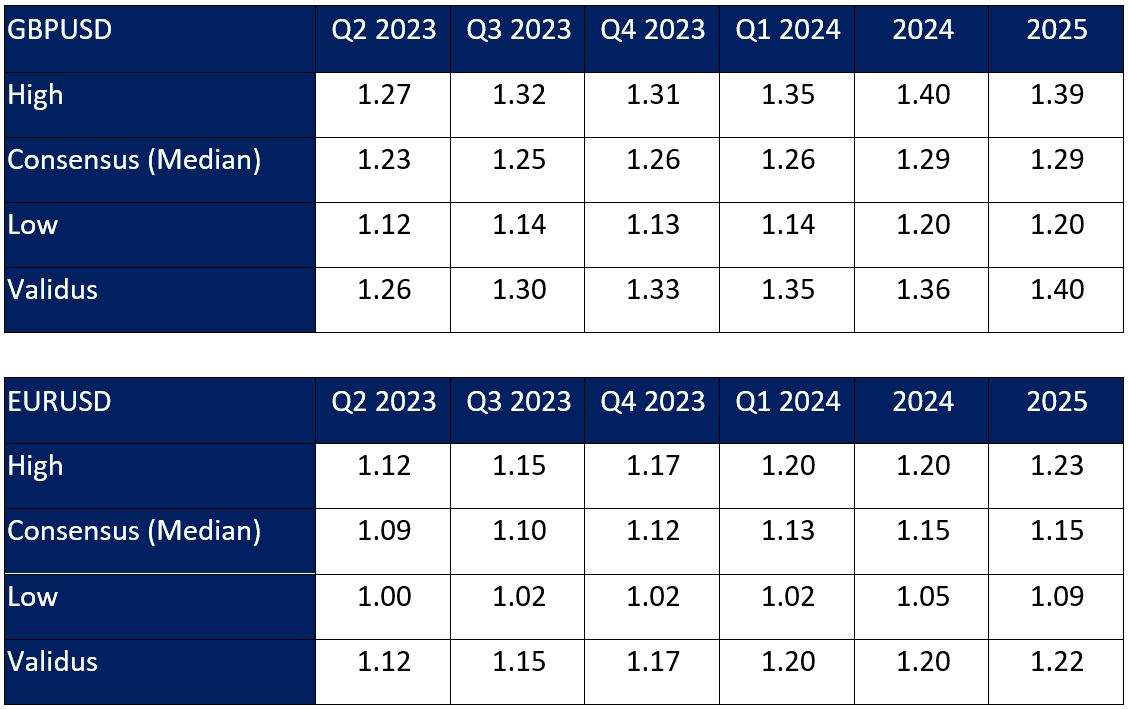
Validus announces appointment of Julie Lalonde to its Board of Directors
18 April 2023
Shifting Focus: From Regional Banks to Central Banks
10 May 2023RISK INSIGHT • 18 APRIL 2023
Disconnect between markets and the Fed continues

Marc Cogliatti, Head of Capital Markets, EMEA
The disconnect between what the market expects the Fed to do with short-term rates and what the Fed itself has been saying has been the subject of many of our FX and Interest Rates Insight pieces this year. For months, our view has been that inflation will remain sticky and the Fed will not be able to cut rates anywhere near as aggressively as the market has been pricing in. While this has not changed, last week’s publication of the minutes from the Fed’s meeting on 22 March was the first sign that it might be starting to soften its stance.
The report shows that policymakers have lowered their expectations for rate hikes this year, citing the crisis in the global banking sector. In turn, they have called for caution and to watch out for signs of a possible credit crunch in upcoming data releases. One line that jumped out was that the Committee is now forecasting a mild recession starting later this year which, in turn, fuelled speculation that rate cuts might be justified.
Beyond the headlines, however, there were a few notable points suggesting that a dramatic policy easing in the second half of the year is far from being a foregone conclusion:
- The Committee sees the recent turmoil as being contained to a small number of banks with poor risk management practices and noted that the banking system remains sound and resilient. The Committee was understandably cautious at its meeting which took place a week after Silicon Valley Bank’s (SVB) collapse. But with the added benefit of hindsight, the recovery in banking stocks and drop in credit default swaps (CDS) pricing suggests that the market is significantly less worried than it was about a deeper crisis unfolding.
- Prior to the publication of the minutes, San Francisco Fed President Daly said that the “strength of the economy and elevated readings on inflation suggest that there is more work to do.” This message was echoed by Richmond Fed President Barkin.
- Most importantly, inflation remains elevated and there is an ongoing danger that it will remain stickier than expected. Whilst last week’s headline consumer price index (CPI) print came in below expectations, the move was short lived when a closer look at the data showed the core measure (excluding food and energy) was slightly higher in March than it was in February—albeit in line with the consensus.
While the Fed’s expectations for interest rates may have come down slightly, the market’s expectations have shifted in the opposite direction. Two weeks ago, the market was pricing in a 63% probability of a Fed hike in May, followed by up to three 25 bps cuts by January 2024. Today, however, the market has priced a hike in May at 87% and has it fully priced in by June. Going forward, the overnight index swaps (OIS) curve is now pricing in no more than two 25 bps cuts by the January 2024 meeting.
Of particular interest, the dollar has continued to weaken throughout this period. Whilst it has not been one way traffic—at the time of writing, GBPUSD is down almost 2 cents from its high above 1.25 last week—the broad trend remains one of USD weakness. A big reason for this is that inflation looks to be even more of a problem for the Eurozone and the UK than it is for the US. Although rates in the Eurozone are not expected to reach anywhere near the 5% we currently see in the US, the gap is narrowing and the market is looking for three more 25 bps hikes before year end. In the UK, the market is looking for two more 25 bps hikes. Importantly, it is not pricing in the aggressive cuts that we are seeing for the Fed.
With Commodity Futures Trading Commission (CFTC) data suggesting that there is plenty of scope for long positions to be built in both EUR and GBP versus USD, our overall bias for both pairs remains skewed to the upside (see the below tables for our latest forecasts).
Chart 1: Currency pairs forecast - GBP and Euro vs USD

Source: Validus Risk Management and Bloomberg
Be the first to know
Subscribe to our newsletter to receive exclusive Validus Insights and industry updates.


